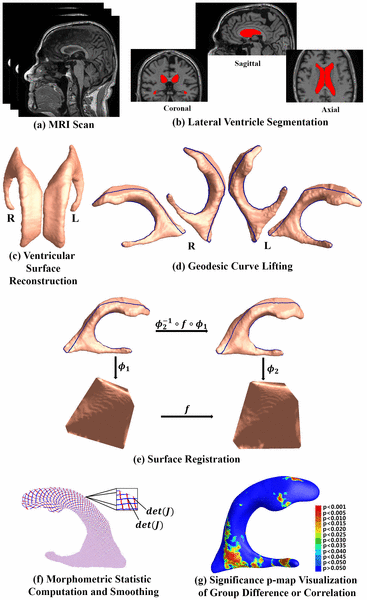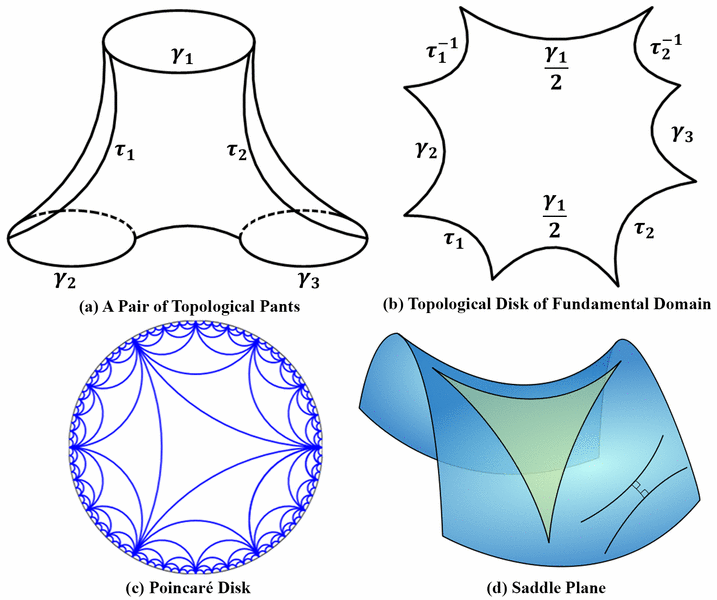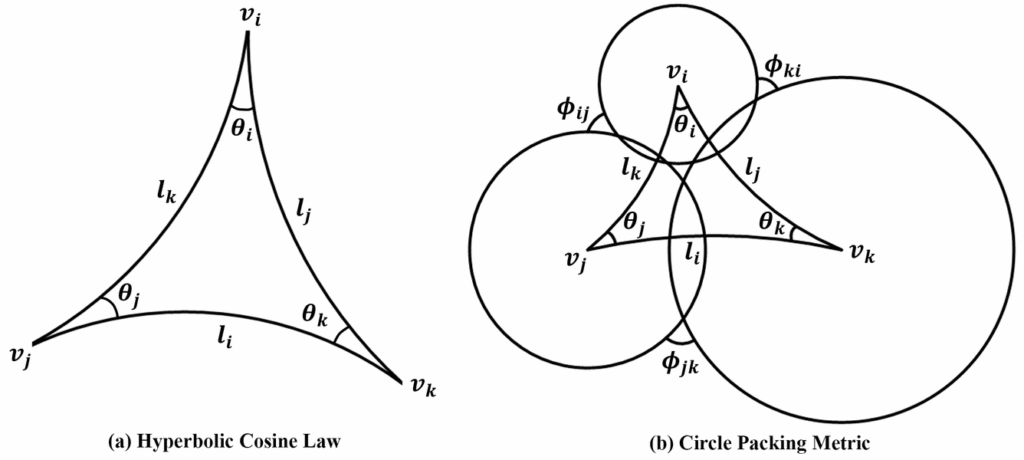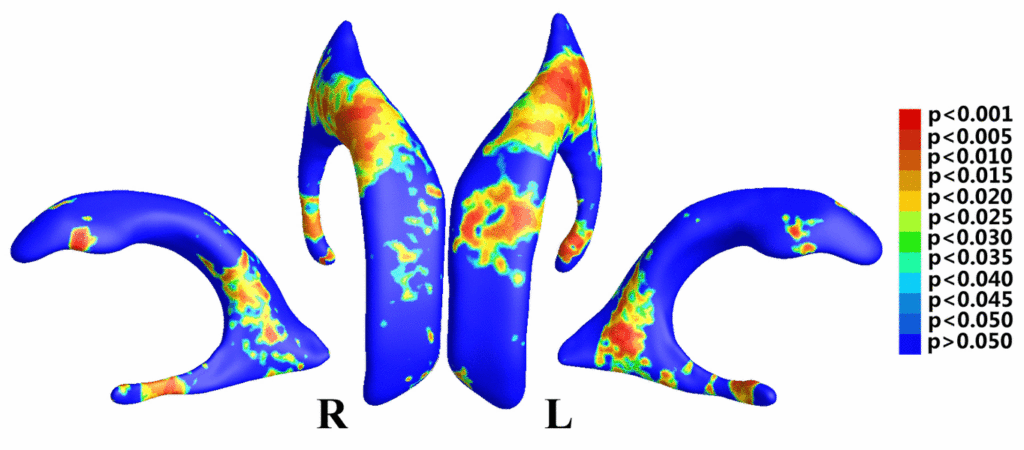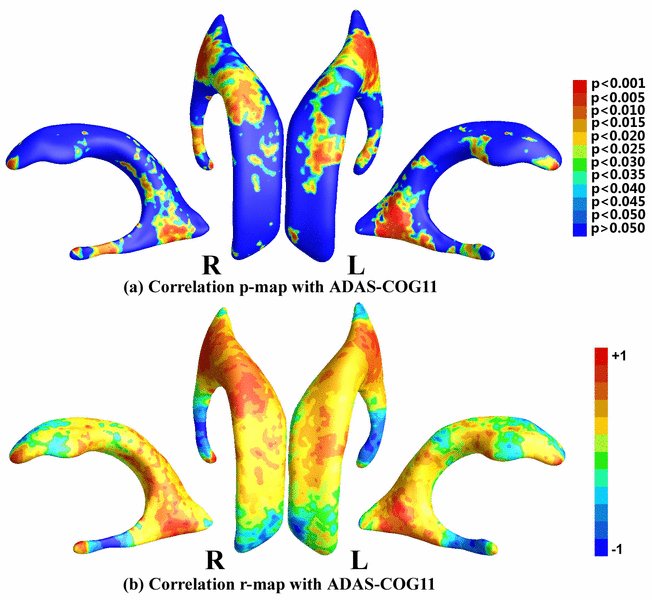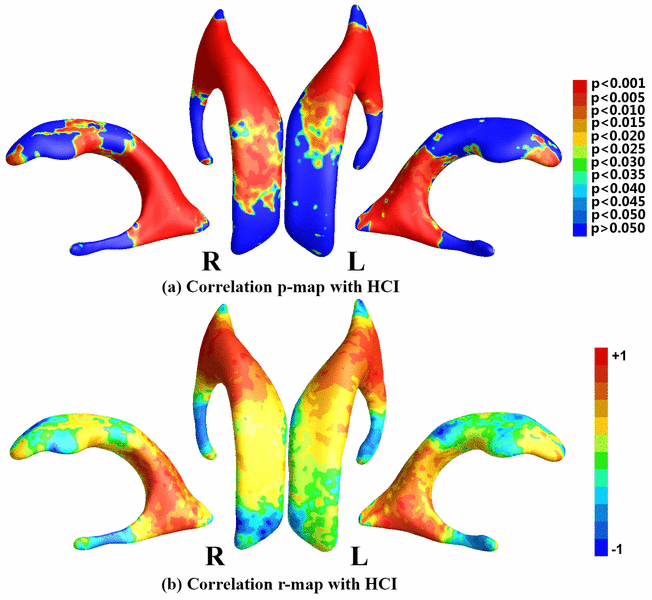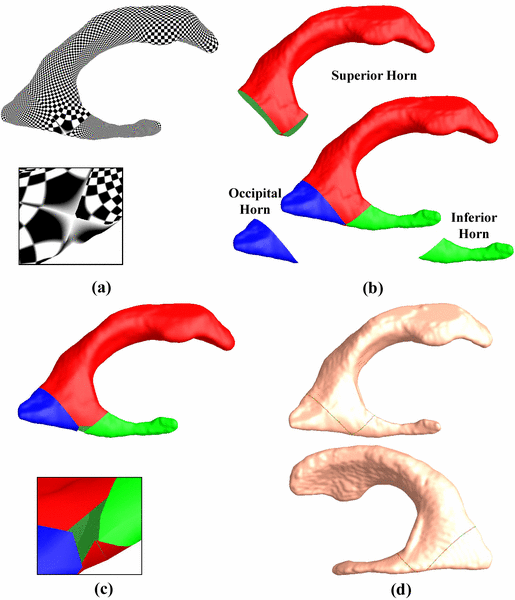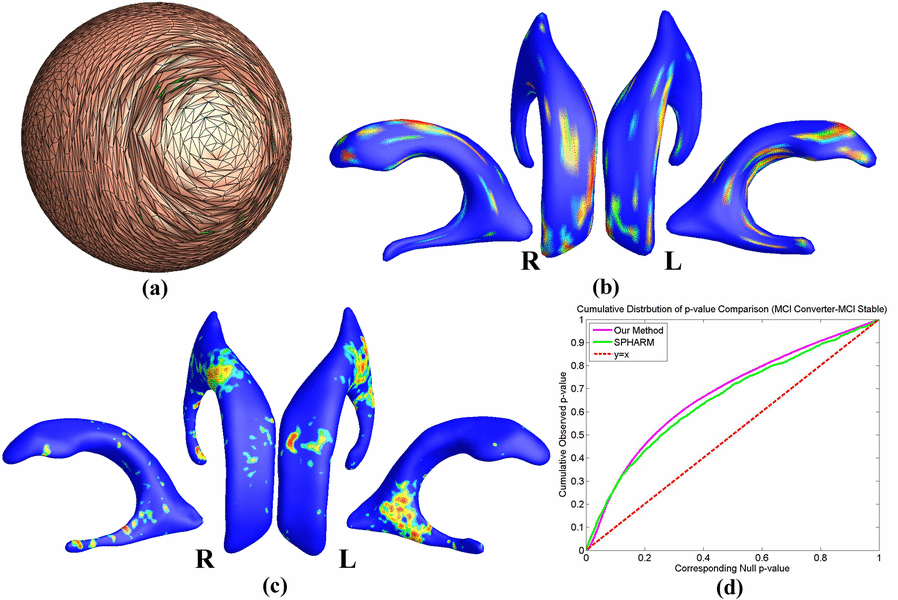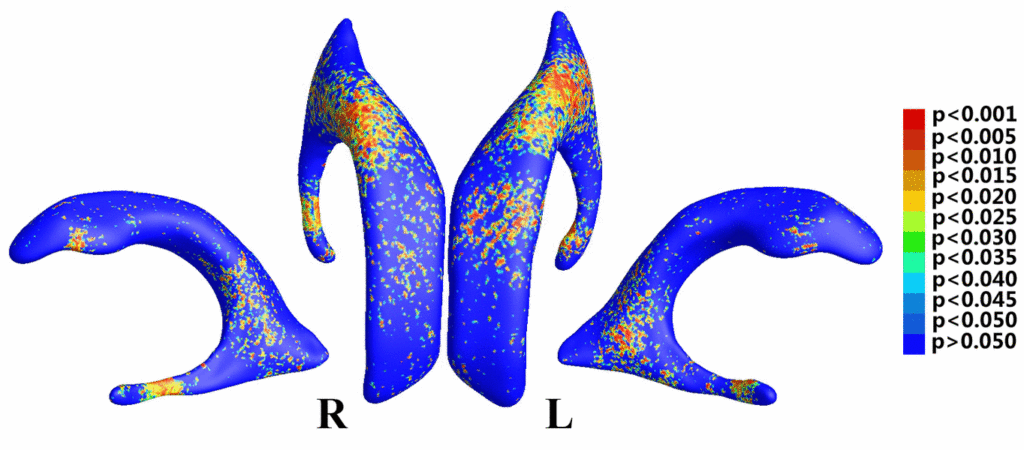Studying Ventricular Abnormalities in Mild Cognitive Impairment with Hyperbolic Ricci Flow and Tensor-based Morphometry
Jie Shi, Cynthia M. Stonnington, Paul M. Thompson, Kewei Chen, Boris Gutman, Cole Reschke, Leslie C. Baxter, Eric M. Reiman, Richard J. Caselli, and Yalin Wang
Abstract
Mild Cognitive Impairment (MCI) is a transitional stage between normal aging and dementia and people with MCI are at high risk of progression to dementia. MCI is attracting increasing attention, as it offers an opportunity to target the disease process during an early symptomatic stage. Structural magnetic resonance imaging (MRI) measures have been the mainstay of Alzheimer’s disease (AD) imaging research, however, ventricular morphometry analysis remains challenging because of its complicated topological structure. Here we describe a novel ventricular morphometry system based on the hyperbolic Ricci flow method and tensor-based morphometry (TBM) statistics. Unlike prior ventricular surface parameterization methods, hyperbolic conformal parameterization is angle-preserving and does not have any singularities. Our system generates a one-to-one diffeomorphic mapping between ventricular surfaces with consistent boundary matching conditions. The TBM statistics encode a great deal of surface deformation information that could be inaccessible or overlooked by other methods. We applied our system to the baseline MRI scans of a set of MCI subjects from the Alzheimer’s Disease Neuroimaging Initiative (ADNI: 71 MCI converters vs. 62 MCI stable). Although the combined ventricular area and volume features did not differ between the two groups, our fine-grained surface analysis revealed significant differences in the ventricular regions close to the temporal lobe and posterior cingulate, structures that are affected early in AD. Significant correlations were also detected between ventricular morphometry, neuropsychological measures, and a previously described imaging index based on fluorodeoxyglucose positron emission tomography (FDG-PET) scans. This novel ventricular morphometry method may offer a new and more sensitive approach to study preclinical and early symptomatic stage AD.
Figures (click on each for a larger version):
Related Publications
- Shi J, Stonnington CM, Thompson PM, Chen K, Gutman B, Reschke C, Baxter LC, Reiman EM, Caselli RJ, Wang Y, ADNI group, “ Studying Ventricular Abnormalities in Mild Cognitive Impairment with Hyperbolic Ricci Flow and Tensor-based Morphometry“, NeuroImage, 104(1), Jan. 2015, pp. 1-20.
- Shi J, Stonnington CM, Thompson PM, Chen K, Gutman BA, Reschke C, Baxter LC, Reiman EM, Caselli RJ, Wang Y, ADNI Group, “Hyperbolic Ricci Flow and Geodesic Curve Lifting for Consistent Ventricular Surface Registration“, the 7th International Workshop on High Performance Computing for Biomedical Image Analysis (HPC-MICCAI), 2014
- Shi J, Stonnington CM, Thompson PM, Chen K, Gutman B, Reschke C, Baxter LC, Reiman EM, Caselli RJ, Wang Y, “Surface Registration for Ventricular Morphometry Analysis in Mild Cognitive Impairment“, Arizona Alzheimer’s Consortium Annual Scientific Conference, June 5, 2014, Mesa, AZ
- Shi R, Zeng W, Su Z, Damasio H, Lu Z, Wang Y, Yau S.-T. Gu X, “Hyperbolic Harmonic Mapping for Constrained Brain Registration“, IEEE Computer Society Conference on Computer Vision and Pattern Recognition (CVPR), pp. 2531-2538, Portland, Oregan, June, 2013 [Oral]
- Shi R, Zeng W, Su Z, Wang Y, Damasio H, Lu Z, Yau S.-T. Gu X, “Hyperbolic Harmonic Brain Surface Registration with Curvature-based Landmark Matching“, Information Processing in Medical Imaging, 23rd International Conference (IPMI), Proceedings, pp. 159-170, Asilomar, CA, June, 2013
- Shi J, Thompson PM, Wang Y, “Hyperbolic Ricci Flow and Its Application in Studying Lateral Ventricle Morphometry“, MICCAI Workshop: International Workshop on Multimodal Brain Image Analysis (MBIA), Nice, France, Oct. 2012
- Wang Y, Dai W, Gu X, Chan TF, Yau S-T, Toga AW, Thompson PM, “Teichmüller Shape Space Theory and Its Application to Brain Morphometry”, 12th International Conference on Medical Image Computing and Computer Assisted Intervention – MICCAI 2009, London, UK, Sep. 2009, pp. 133-140
